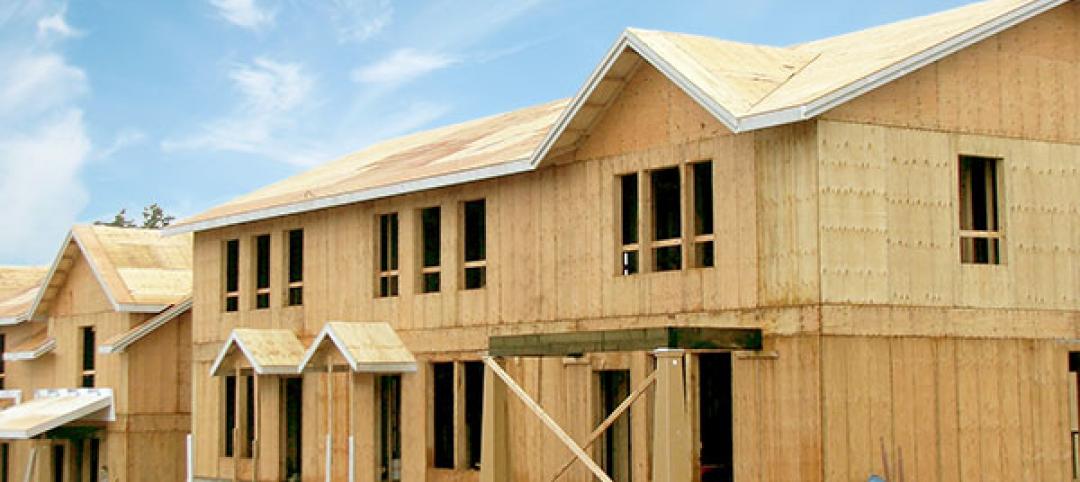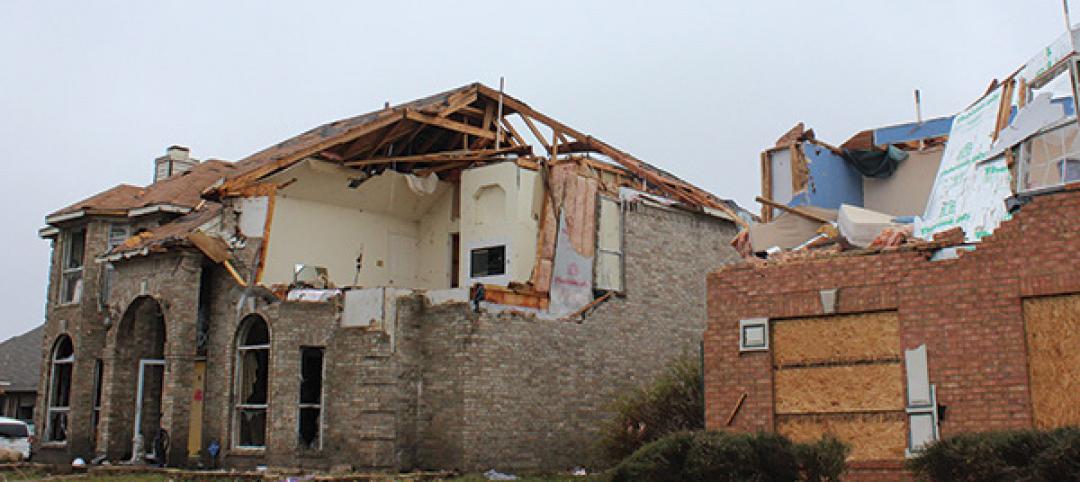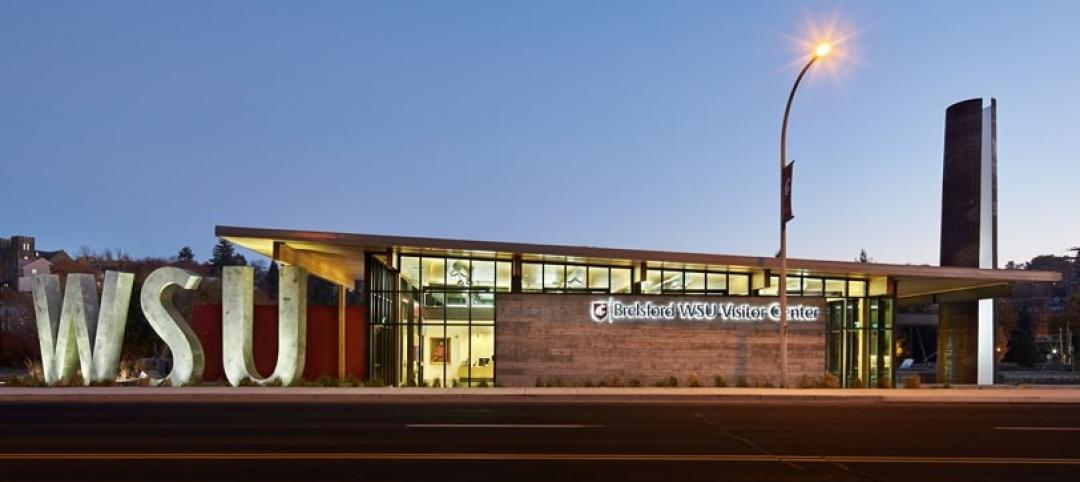As architects continue to search for ways to improve building efficiencies, more and more are turning to advanced framing methods, particularly for multifamily and light commercial projects.
Also known as “optimum value engineering” (OVE), advanced framing techniques optimize material usage to cut down on waste, eliminate redundancies, reduce labor, and increase a structure’s energy efficiency, while maintaining structural integrity.
Among the benefits of advanced framing:
• Energy efficiency: By maximizing space for cavity insulation and minimizing the potential for insulation voids, advanced framing delivers increased energy performance in wall systems. In addition, the methods simplify the installation of insulation and air sealing.
• Structural integrity: When properly constructed, advanced framed walls that are fully sheathed with wood structural panels provide the structure with the strength to safely withstand design loads.
• Sustainability: Wood is a renewable resource that is manufactured in efficient processes that require less energy than is required for other building materials, such as steel and concrete. Advanced framing techniques also optimize material usage and reduce construction waste.
Advanced framing can be implemented in pieces, depending on the design of the building and the expertise of the framing crews. Here is a look at three advanced framing techniques that make the most sense for multifamily and light commercial buildings, and can be adopted one at a time. Each of these concepts focuses on increasing cavity insulation and reducing thermal bridging, thereby providing overall higher whole-wall R-values.
1. 2x6 Framing Placed 24” On Center
Walls built with 2x6 wood studs spaced 24” on center have deeper, wider insulation cavities than conventional 2x4 framing spaced 16” on center, thereby increasing the amount of insulation inside the wall and improving the whole-wall R-value.
Switching from 2x4s at 16” on center to 2x6s at 24” on center decreases the number of pieces, helping to offset the cost of the deeper framing members.
2. Right-Sized, Insulated Headers
Instead of a "one size fits all" approach, deliberately size the header for the load. Engineers’ standard header tables typically fill up the depth of the wall; instead, have your engineer create an additional header table specific to advanced framing techniques. First consider a standard size header, then resize it for insulation.
Advanced framing headers offer increased energy efficiency by replacing framing materials with space for insulation inside the area of the header. Advanced framing headers are sized for the loads they carry and are often installed in single plies rather than double.
Headers at openings in non-load-bearing walls are not required. The top of the opening can typically be framed with a flatwise member the same dimensions as the wall studs.
3. Corners
Insulated corners eliminate the isolated cavity found in conventional three- or four-stud corners, making it easier to install insulation and providing for more cavity insulation space.
Advanced framing wall corners can include insulated three-stud corners (sometimes referred to as California corners) (see figure) or two-stud corner junctions with ladder blocking, drywall clips, or an alternative means of supporting interior or exterior finish.
To read more about advanced framing and other state-of-the-art techniques and projects, become a member of APA Designers Circle at www.apawood.org/designerscircle. An online community for architects, engineers, and other members of the commercial building industry, Designers Circle provides timely information, technical resources, continuing education, and recommendations for innovative wood-frame construction.
More from Author
Mark Halverson | Oct 26, 2016
Compelling conversations about wood: East and West Coast regional challenges
Fast-rising designers Ben Kasdan and Blake Jackson offer candid perspectives from both coasts on the merits—and challenges—of designing with wood and compare notes on how architects can change perceptions by dreaming big and pushing boundaries.
Mark Halverson | Oct 13, 2016
Engineered wood provides sustainable options, cost savings, and design flexibility
Designers choose engineered wood to deliver strength, stability, and a sustainable solution for complex structural designs
Mark Halverson | Jul 21, 2016
Economical, energy-efficient roof assemblies
Not all roof and ceiling assemblies are created equal, especially when it comes to energy performance.
Mark Halverson | Jul 5, 2016
Takeaways from 2015 Texas tornadoes: Construction details make a difference
Stronger building components combined with more intentionally constructed connections can mean the difference between buildings that withstand tornadoes and those that don’t.
Mark Halverson | Nov 20, 2015
Schooling the visitor
Exposed glulam and other engineered wood products help WSU tell its technology story
Mark Halverson | Aug 25, 2015
Engineered wood helps meet booming demand for multifamily projects
Multifamily housing starts reached 358,000 in 2014, a 16 percent increase over 2013 and the highest total since 2007
Mark Halverson | Jul 29, 2015
Glulam provides aesthetic, structural, and safety solution for Appleton Mills project
The Appleton Mills complex includes 5 million square feet of space, with an original structure built in the 1870s and another building added in 1906
Mark Halverson | Jun 30, 2015
Which Is More Efficient: Wood Walls or Steel and Masonry With Continuous Insulation?
By nature, wood has nearly four times the thermal resistance of steel or masonry
Mark Halverson | Jun 5, 2015
Exposed glulam framework offers quiet complement to Jackson Hole airport’s mountain backdrop
A three-phase expansion and renovation, which began in 2009, nearly doubled the size of the aviation hub; the only one located in a national park
















